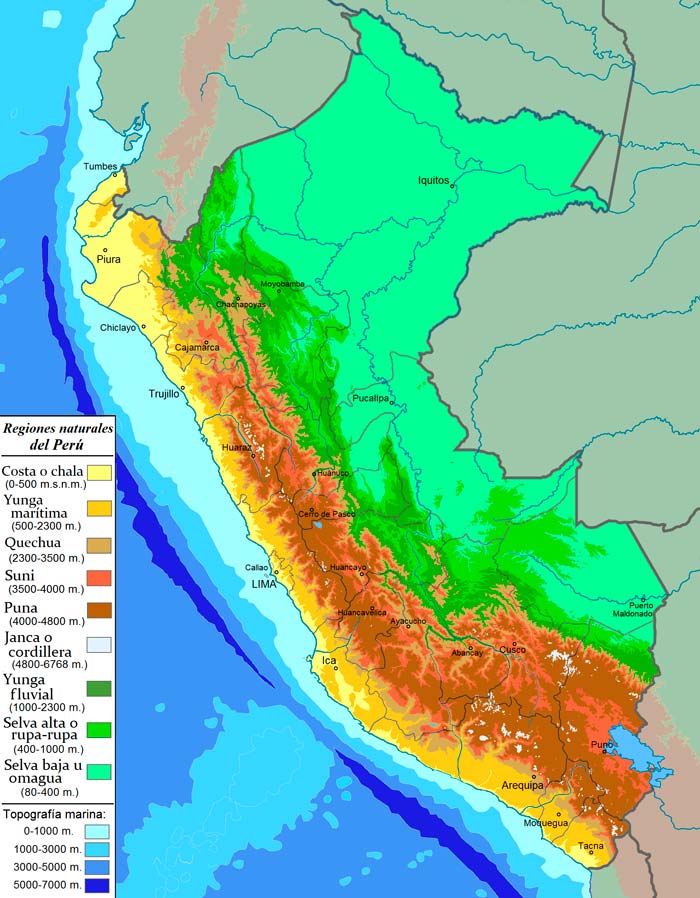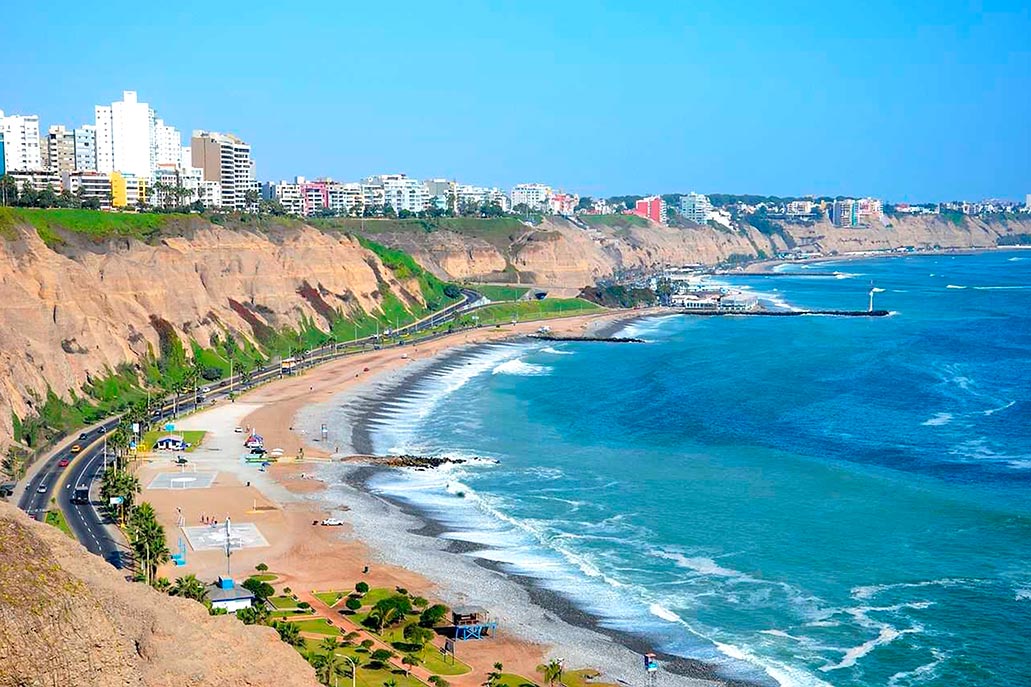What is the geography and climate of Peru like?
If we take the entire globe as a starting point, Peru is located in an intertropical zone, that is, very close to the equator and at a low altitude. This helps us to understand the climate throughout its territory, for example, the drastic differences between winter and summer that can be seen in other countries cannot be perceived. It would also explain why the east-east of the country, that is, the jungle, has a rainy tropical climate, but that is not all, another climatic factor is provided by the Andes mountain range.
It is that the varied topography of the Peruvian soil is completely uneven, especially in the southern sector, where its expansion affects the climatic conditions more clearly. These mountains cross the entire Peruvian territory like a wall. In this sense, the altitude of the Andes Mountains exerts a lot of influence in all the Andean regions, for example, it is responsible for the aridity of the coast and obstructs the passage of rains that come from the east or the jungle.
In this sense and to better explain the geographical representation of the Peruvian territory, it can be divided into three regions: The jungle, the Andes and the coast. This division is based solely on relief, being a classic look with traces of the colony. However, according to the geographer Javier Pulgar Vidal, Peru can be classified into 8 natural regions according to the altitude in which they are found. Within these 8 altitudinal regions there is an adequate space for life, depending on the climatic conditions and the relief that influences the flora, fauna and natural resources. To all these changes we would also have to add the influence of marine currents, which affect the Peruvian coasts and the temperature of its beaches and in some cases generate unexpected rains in the north.
Map of the 8 ecoregions of Peru

Reference map of the 8 Natural Regions
As can be seen depending on the area, the distribution of colors, there are political regions such as the case of Cusco that can have up to 4 natural regions in its territory, hence where the varied and complex Peruvian geography lies . The first two regions would correspond to the coast, from the Quechua Natural region to Jaca or Cordillera, meaning the Andes or Peruvian sierra, the last ones in green would be the jungle.
A simpler way to explain the weather throughout Peru
As we can see, it is a bit complicated to explain the Peruvian diversity and the climatological diversity that are formed by the geographical variations throughout the territory, that is why we will take advantage of delimiting it in the classical way to mention details that They can be more important for travelers, as in the case of rain, cold or heat and in this way better equip our backpacks.
The climate on the Peruvian coast, the coast includes the entire strip from Piura to Tacna. Throughout this place you can generally find a warm temperate climate, but with high humidity and dense mists during winter. The warmest area is the north both in climate and in its waters. The temperature on the northern coasts can reach 30°C, however there will be heavy rains in January and February. Humidity and mist on the central and southern coasts during winter give a sensation of cold, however the temperature does not usually drop below 15°C.
The climate in the Peruvian Andes, it can be mentioned that it has two seasons, one where the rains are continuous and last for long hours (November to March) and the another where the rains are scarce (April to October) but the temperature drops in some cases to -3°C in some sectors and regions. Some call these two seasons a special summer and winter, while others prefer to call it the wet and dry season. Many will advise you to visit the Peruvian Andes in the second season, to avoid the rains and have a more comfortable trip, but this does not mean that you cannot visit Cusco in the other season.
The climate in the Peruvian jungle, has climatic conditions that can be compared with the Peruvian Andes, in the sense of the presence of rains. Rains in the Peruvian jungle occur throughout the year, but from April to October, the presence of rains has less strength and short periods, which facilitates the visit of tourists because the weather is more bearable and therefore less dangerous. The rest of the months, from November to March, the rains are heavier, the rivers are full of water and many landslides occur on the roads, which is detrimental to the visit of tourists. Throughout the year there is a lot of humidity. Another important fact is that in some months like May and August you can feel that the temperature drops for a few days, between 8 to 12 degrees Celsius.
What time zone or time zone is used in Peru?
In Peru it is used: “– 5 hours from GMT” (Greenwich Mean Time or Greenwinch Meridian Time). GMT is considered Coordinated Universal Time or UTC is used for international time reference.
Some references of Peruvian time with the main cities of the world:
City | Cusco | New York | Paris | Tokyo | London | Madrid |
|---|---|---|---|---|---|---|
| Time | 10:00 a.m. | 11:00 a.m. | 4:00 pm | 3:00 pm | 4:00 pm | 4:00 pm |
